You need to configure GitHub to use Azure Active Directory (Azure AD) for authentication.
What should you do first?
Answer:
B
When you connect to a Git repository from your Git client for the first time, the credential manager prompts for credentials. Provide your Microsoft account or Azure
AD credentials.
Note: Git Credential Managers simplify authentication with your Azure Repos Git repositories. Credential managers let you use the same credentials that you use for the Azure DevOps Services web portal. Credential managers support multi-factor authentication through Microsoft account or Azure Active Directory (Azure
AD). Besides supporting multi-factor authentication with Azure Repos, credential managers also support two-factor authentication with GitHub repositories.
Reference:
https://docs.microsoft.com/en-us/azure/devops/repos/git/set-up-credential-managers
You have an Azure DevOps project named Project1 and an Azure subscription named Sub1.
You need to prevent releases from being deployed unless the releases comply with the Azure Policy rules assigned to Sub1.
What should you do in the release pipeline of Project1?
Answer:
A
You can check policy compliance with gates.
You can extend the approval process for the release by adding a gate. Gates allow you to configure automated calls to external services, where the results are used to approve or reject a deployment.
You can use gates to ensure that the release meets a wide range or criteria, without requiring user intervention.
Reference:
https://docs.microsoft.com/en-us/azure/devops/pipelines/release/deploy-using-approvals
DRAG DROP -
You have an Azure Kubernetes Service (AKS) implementation that is RBAC-enabled.
You plan to use Azure Container Instances as a hosted development environment to run containers in the AKS implementation.
You need to configure Azure Container Instances as a hosted environment for running the containers in AKS.
Which three actions should you perform in sequence? To answer, move the appropriate actions from the list of actions to the answer area and arrange them in the correct order.
Select and Place: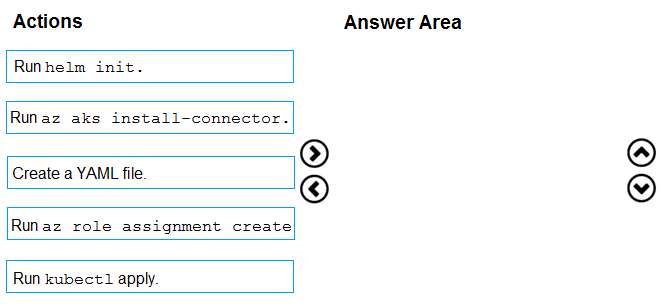
Answer:
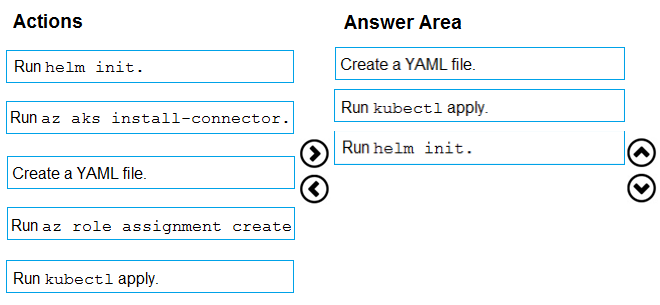
Step 1: Create a YAML file.
If your AKS cluster is RBAC-enabled, you must create a service account and role binding for use with Tiller. To create a service account and role binding, create a file named rbac-virtual-kubelet.yaml
Step 2: Run kubectl apply.
Apply the service account and binding with kubectl apply and specify your rbac-virtual-kubelet.yaml file.
Step 3: Run helm init.
Configure Helm to use the tiller service account:
helm init --service-account tiller
You can now continue to installing the Virtual Kubelet into your AKS cluster.
Reference:
https://docs.microsoft.com/en-us/azure/aks/virtual-kubelet
You have an Azure DevOps project that contains a build pipeline. The build pipeline uses approximately 50 open source libraries.
You need to ensure that all the open source libraries comply with your company's licensing standards.
Which service should you use?
Answer:
C
WhiteSource provides WhiteSource Bolt, a lightweight open source security and management solution developed specifically for integration with Azure DevOps and Azure DevOps Server.
Note: WhiteSource is the leader in continuous open source software security and compliance management. WhiteSource integrates into your build process, irrespective of your programming languages, build tools, or development environments. It works automatically, continuously, and silently in the background, checking the security, licensing, and quality of your open source components against WhiteSource constantly-updated definitive database of open source repositories.
Note: Blackduck would also be a good answer, but it is not an option here.
Reference:
https://www.azuredevopslabs.com/labs/vstsextend/whitesource/
You are designing the security validation strategy for a project in Azure DevOps.
You need to identify package dependencies that have known security issues and can be resolved by an update.
What should you use?
Answer:
A
Incorrect Answers:
B: Jenkins is a popular open-source automation server used to set up continuous integration and delivery (CI/CD) for your software projects.
D: SonarQube is a set of static analyzers that can be used to identify areas of improvement in your code. It allows you to analyze the technical debt in your project and keep track of it in the future.
Reference:
https://octopus.com/docs/packaging-applications
You administer an Azure DevOps project that includes package feeds.
You need to ensure that developers can unlist and deprecate packages. The solution must use the principle of least privilege.
Which access level should you grant to the developers?
Answer:
B
Feeds have four levels of access: Owners, Contributors, Collaborators, and Readers. Owners can add any type of identity-individuals, teams, and groups-to any access level.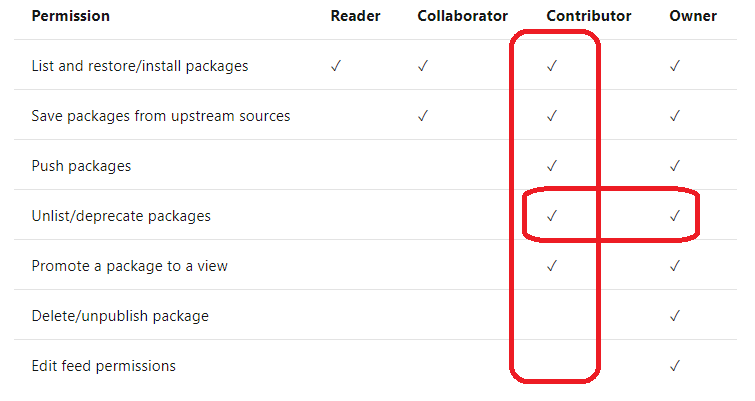
Reference:
https://docs.microsoft.com/en-us/azure/devops/artifacts/feeds/feed-permissions
HOTSPOT -
You have a project in Azure DevOps that has three teams as shown in the Teams exhibit. (Click the Teams tab.)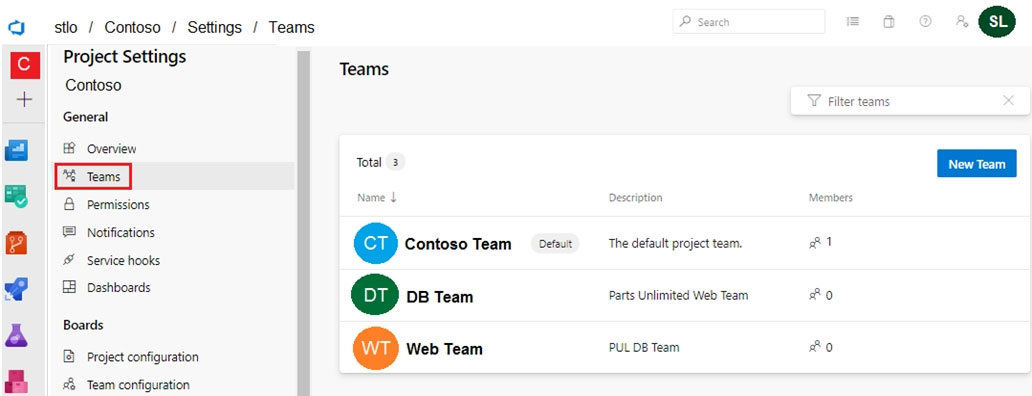
You create a new dashboard named Dash1.
You configure the dashboard permissions for the Contoso project as shown in the Permissions exhibit. (Click the Permissions tab.)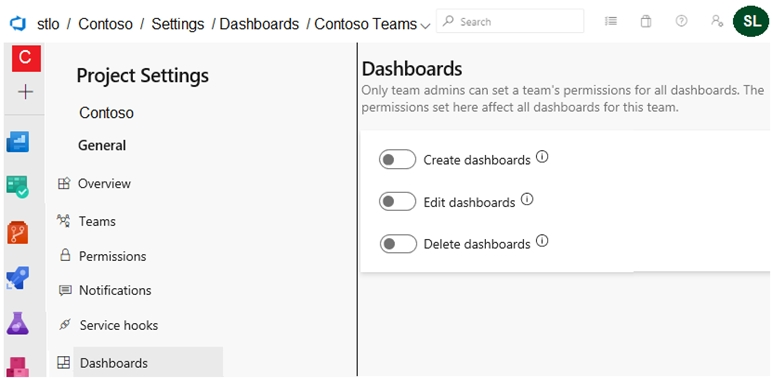
All other permissions have the default values set.
For each of the following statements, select Yes if the statement is true. Otherwise, select No.
NOTE: Each correct selection is worth one point.
Hot Area: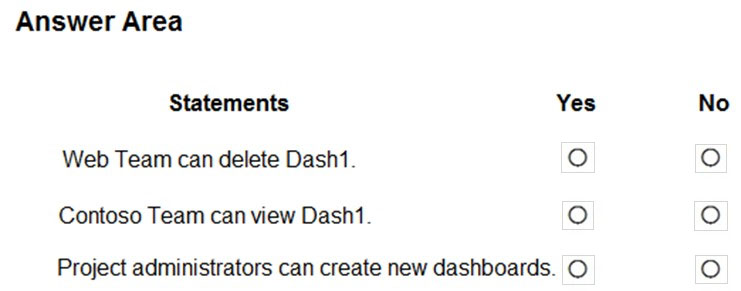
Answer:
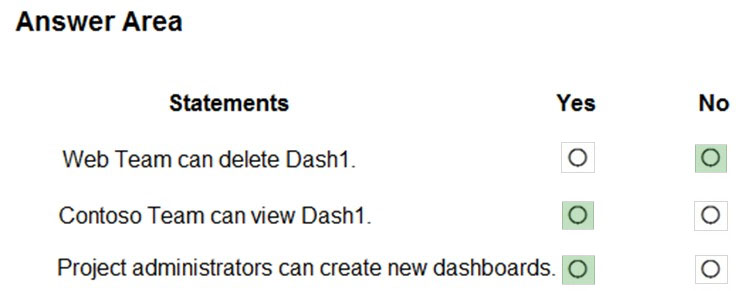
Reference:
https://docs.microsoft.com/en-us/azure/devops/report/dashboards/charts-dashboard-permissions-access
Your company is concerned that when developers introduce open source libraries, it creates licensing compliance issues.
You need to add an automated process to the build pipeline to detect when common open source libraries are added to the code base.
What should you use?
Answer:
C
Secure and Manage Open Source Software
Black Duck helps organizations identify and mitigate open source security, license compliance and code-quality risks across application and container portfolios.
Black Duck Hub and its plugin for Team Foundation Server (TFS) allows you to automatically find and fix open source security vulnerabilities during the build process, so you can proactively manage risk. The integration allows you to receive alerts and fail builds when any Black Duck Hub policy violations are met.
Note:
There are several versions of this question in the exam. The question has two possible correct answers:
✑ Black Duck
✑ WhiteSource Bolt
Other incorrect answer options you may see on the exam include the following:
✑ OWASP ZAP
✑ PDM
✑ SourceGear
SourceGear Vault -
Reference:
https://marketplace.visualstudio.com/items?itemName=black-duck-software.hub-tfs
DRAG DROP -
You are implementing a package management solution for a Node.js application by using Azure Artifacts.
You need to configure the development environment to connect to the package repository. The solution must minimize the likelihood that credentials will be leaked.
Which file should you use to configure each connection? To answer, drag the appropriate files to the correct connections. Each file may be used once, more than once, or not at all. You may need to drag the split bar between panes or scroll to view content.
NOTE: Each correct selection is worth one point.
Select and Place:
Answer:

All Azure Artifacts feeds require authentication, so you'll need to store credentials for the feed before you can install or publish packages. npm uses .npmrc configuration files to store feed URLs and credentials. Azure DevOps Services recommends using two .npmrc files.
Feed registry information: The .npmrc file in the project
One .npmrc should live at the root of your git repo adjacent to your project's package.json. It should contain a "registry" line for your feed and it should not contain credentials since it will be checked into git.
Credentials: The .npmrc file in the user's home folder
On your development machine, you will also have a .npmrc in $home for Linux or Mac systems or $env.HOME for win systems. This .npmrc should contain credentials for all of the registries that you need to connect to. The NPM client will look at your project's .npmrc, discover the registry, and fetch matching credentials from $home/.npmrc or $env.HOME/.npmrc.
Reference:
https://docs.microsoft.com/en-us/azure/devops/artifacts/npm/npmrc?view=azure-devops&tabs=windows
HOTSPOT -
You have an Azure DevOps project that contains a build pipeline. The build pipeline uses approximately 50 open source libraries.
You need to ensure that the project can be scanned for known security vulnerabilities in the open source libraries.
What should you do? To answer, select the appropriate options in the answer area.
NOTE: Each correct selection is worth one point.
Hot Area: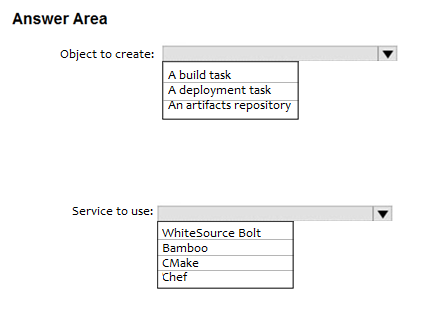
Answer:

Box 1: A Build task -
Trigger a build -
You have a Java code provisioned by the Azure DevOps demo generator. You will use WhiteSource Bolt extension to check the vulnerable components present in this code.
1. Go to Builds section under Pipelines tab, select the build definition WhiteSourceBolt and click on Queue to trigger a build.
2. To view the build in progress status, click on ellipsis and select View build results.
Box 2: WhiteSource Bolt -
WhiteSource is the leader in continuous open source software security and compliance management. WhiteSource integrates into your build process, irrespective of your programming languages, build tools, or development environments. It works automatically, continuously, and silently in the background, checking the security, licensing, and quality of your open source components against WhiteSource constantly-updated definitive database of open source repositories.
Reference:
https://www.azuredevopslabs.com/labs/vstsextend/whitesource/